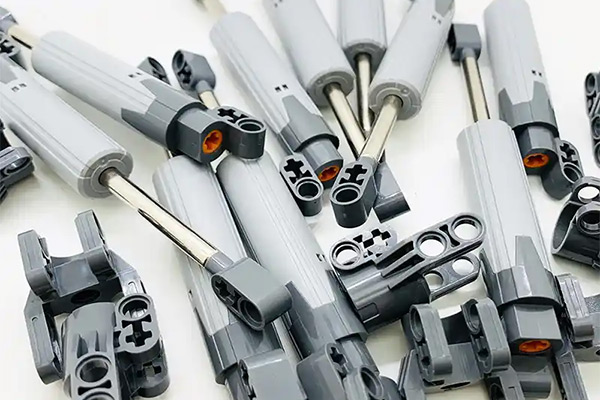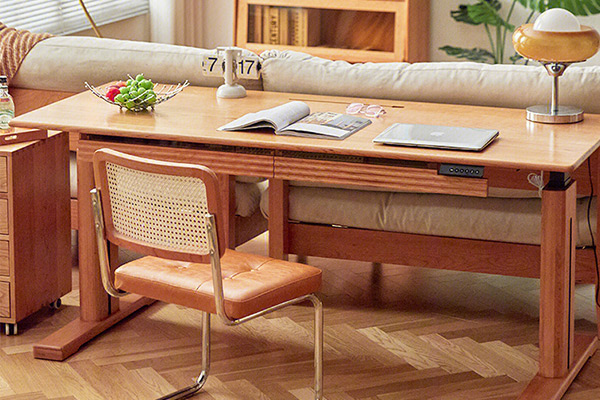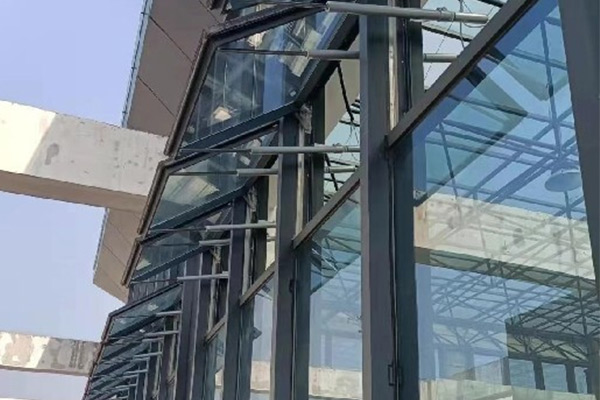From Riot Barriers to Smart Desk Legs: The Cross-Industry Evolution of Electric Lifting Columns
When you hear electric lifting columns, your first impression might be the formidable anti-ram barriers standing tall at city intersections, staunchly blocking vehicles. They are robust, reliable, and powerful allies in maintaining public safety. However, you might not realize that this technology, initially developed for security, has now evolved across industries, even making its way into our offices and homes, transforming into smart desk legs and bringing unexpected convenience and comfort to modern life.
Origins: The Hardcore Riot Barrier
The birth of electric lifting columns is inextricably linked to safety demands. Initially, they were designed as high-strength riot barriers or hydraulic lifting columns, used in military bases, government buildings, embassies, and other critical locations, as well as banks, prisons, and other areas requiring extremely high levels of security. In these scenarios, the columns needed to rise quickly to form an impenetrable physical barrier, effectively preventing vehicle ramming and deterring unauthorized entry or terrorist attacks.
The characteristics of these early columns included:
Robust Durability: Constructed from high-strength steel, capable of withstanding immense impact forces.
Rapid Response: Capable of raising or lowering within seconds via hydraulic or electric systems.
High Security: Typically equipped with independent control systems, sometimes even offering manual operation in case of power failure.
As urban security demands increased, riot barriers gradually found application in public areas like commercial pedestrian streets, plazas, and large event entrances, providing both safety and traffic management/emergency evacuation capabilities.
Transformation: From "Keeping Out" to "Flexible Openness"
The first significant transformation of electric lifting columns was their shift from purely "riot control" to broader "traffic management" and "area control." In many cities, they are used to restrict vehicle access to specific areas, for example, allowing public transport vehicles to pass during certain hours while prohibiting private cars. This approach is far more flexible and efficient than traditional fixed columns or fences, allowing for adjustments based on real-time needs.
At this stage, column design began to incorporate more factors, such as:
Aesthetics: Attempts to blend into the urban landscape, moving beyond a purely industrial appearance.
Intelligence: Integration of sensors for vehicle recognition, remote control, and linkage with intelligent traffic systems.
Ease of Operation: More user-friendly control interfaces for management personnel.
These improvements expanded the application scenarios of electric lifting columns, making them a crucial component of urban traffic management and security infrastructure.
Cross-Industry Leap: The "Comfort Revolution" of Smart Desk Legs
However, the truly surprising cross-industry leap for electric lifting columns was their entry into the furniture sector, specifically becoming the core component of height-adjustable desks—the smart desk legs.
Imagine working at your computer, feeling fatigued from prolonged sitting in one position. Wouldn't it be much more comfortable if your desk height could be easily adjusted, allowing you to stand and work for a while? This is the allure of electric height-adjustable desks, and the mechanism that drives the desktop's movement is a linear actuator, evolved from the electric retractable column.
The evolution of smart desk legs primarily involved:
Smaller Size and More Precise Control: Compared to the robust nature of riot columns, smart desk legs require more compact, quieter operating mechanisms, and more precise height adjustment.
Multi-purpose Integration: Beyond just height adjustment, modern smart desk legs might also integrate USB charging ports, memory height settings, and sedentary reminders.
Design Aesthetics: Smart desk legs have also undergone aesthetic optimization to suit various home and office styles.
From riot barriers to smart desk legs, the cross-industry evolution of electric lifting columns exemplifies the power of technological inclusivity and innovation. A technology originally designed for stringent security needs, through refinement, miniaturization, and intelligent adaptation, has ultimately found its way into everyday homes, improving our work and living conditions.
Outlook: More Possibilities on the Horizon
The evolution of electric lifting columns is far from over. In the future, we might see them play a role in even more areas:
Smart Homes: Retractable TV stands, height-adjustable kitchen countertops, or even retractable storage units, adding flexibility to home spaces.
Medical Rehabilitation: Height-adjustable hospital beds and operating tables, providing convenience for patients and healthcare professionals.
Robotics and Automation: Providing precise lifting or positioning functions for various automated equipment.
From their initial role as "hardcore guardians" to their current status as "smart companions," the cross-industry evolution of electric lifting columns is a vivid illustration of how technological innovation can transform our lives. It reminds us that with imagination and practical application, any technology can transcend its boundaries and create unexpected value.
-

From Riot Barriers to Smart Desk Legs: The Cross-Industry Evolution of Electric Lifting Columns
-

From Riot Barriers to Smart Desk Legs: The Cross-Industry Evolution of Electric Lifting Columns
-

From Riot Barriers to Smart Desk Legs: The Cross-Industry Evolution of Electric Lifting Columns
-

From Riot Barriers to Smart Desk Legs: The Cross-Industry Evolution of Electric Lifting Columns

